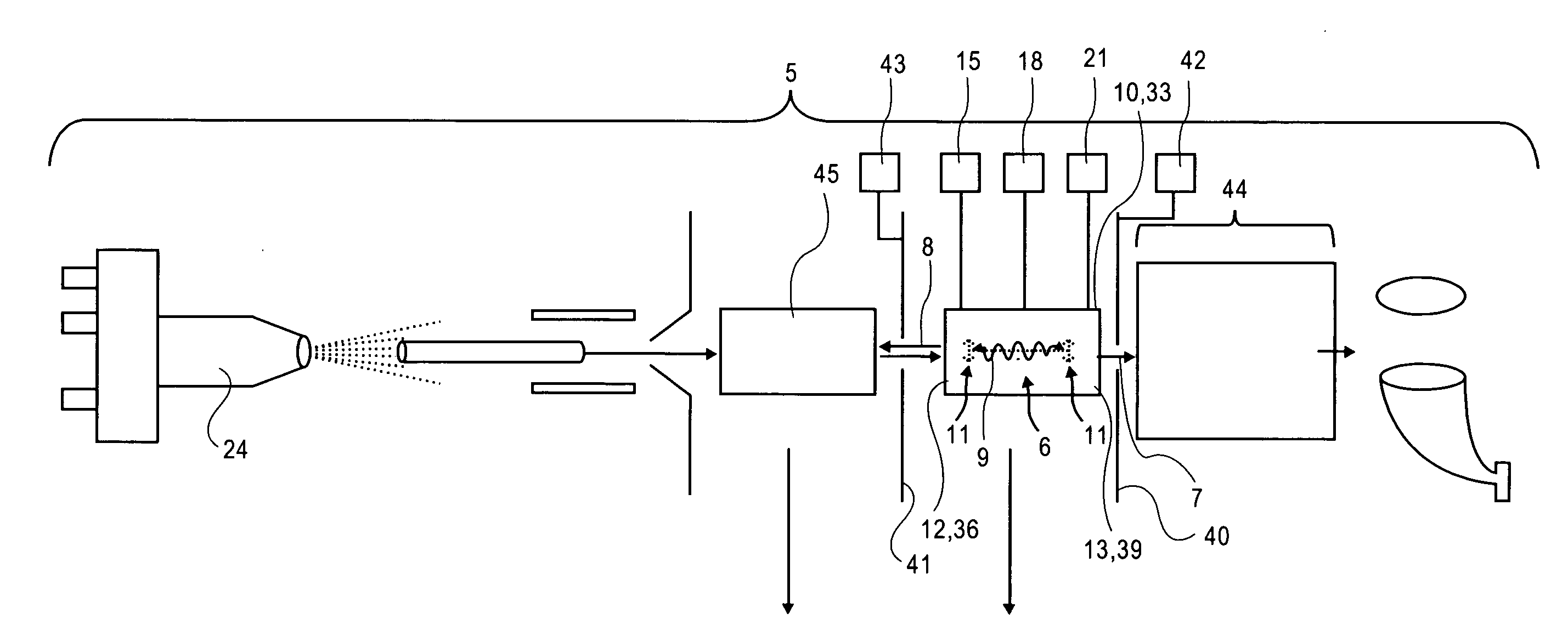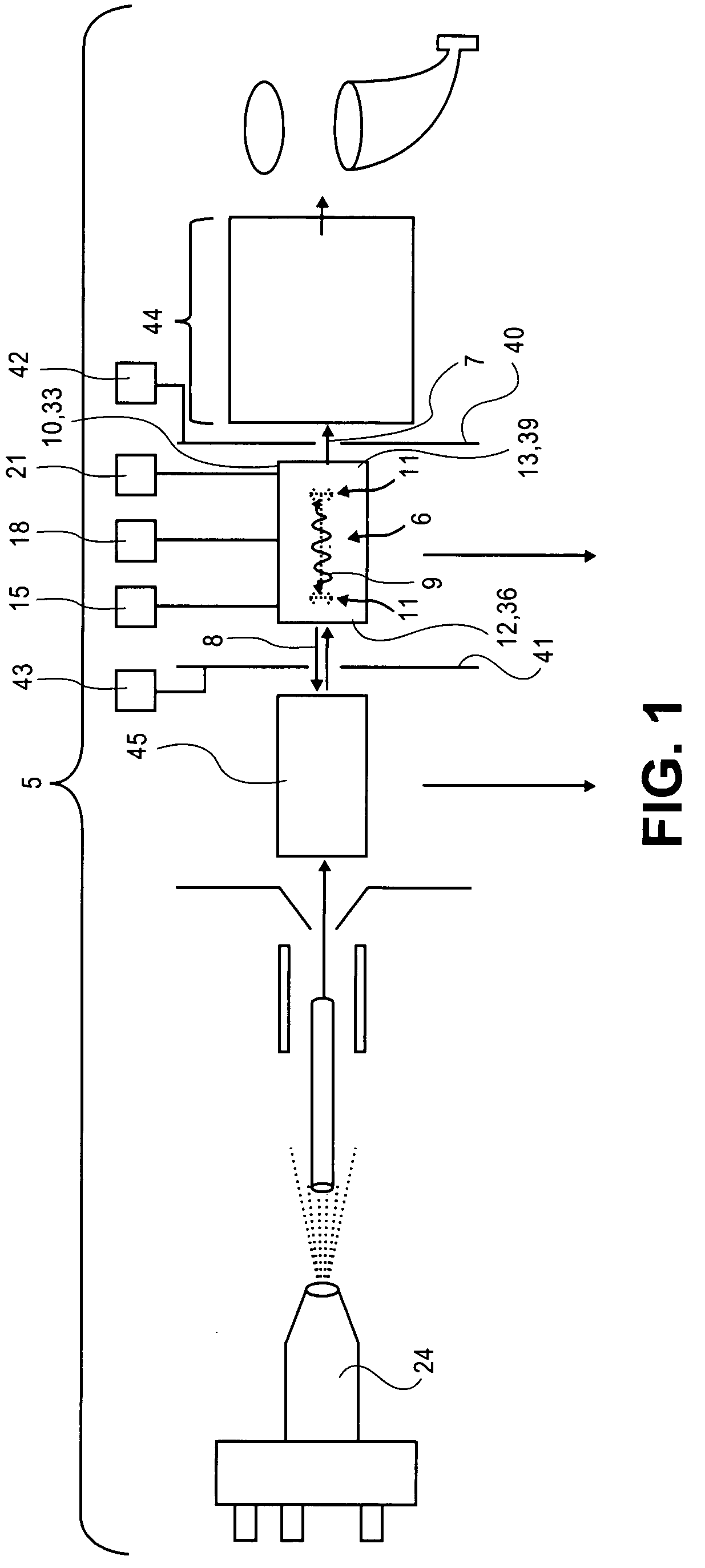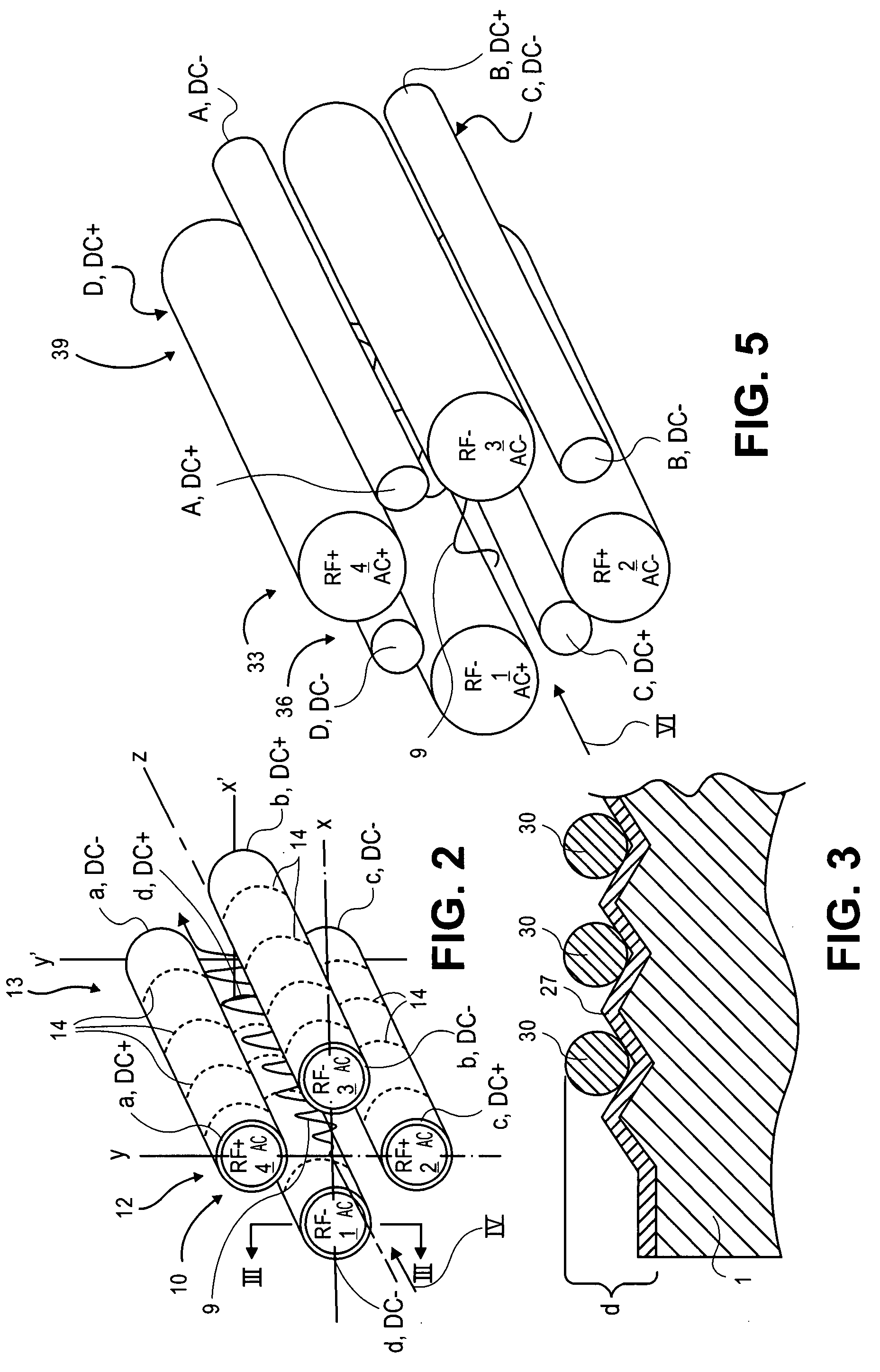Separation and axial ejection of ions based on m/z ratio
a technology of axial ejection and separation of ions, which is applied in the direction of isotope separation, separation process, electric discharge tube, etc., can solve the problems of adversely affecting ion transmission efficiency, poor homogeneity of dc potential, and complicated operation of transfer optics in mass spectrometers, etc., to achieve good m/z separation, increase ion storage capacity, and great ion selectivity
- Summary
- Abstract
- Description
- Claims
- Application Information
AI Technical Summary
Benefits of technology
Problems solved by technology
Method used
Image
Examples
Embodiment Construction
[0046]Multipole devices are filled with ions to be analyzed. The ions are permitted to spread along a length of the multipole. Collision cooling may be applied at one or more positions along a length of the multipole. When barriers are placed upstream and downstream of the multipole, collisional cooling results in the ions generally moving axially toward a center of the multipole. Additional potential wells may be incorporated by selecting potentials for segments along a length of rod electrodes of the multipole, for example. A main RF voltage is applied to the multipole to confine the ions radially and urge them to reside on a center line or central axis of the multipole. An auxiliary RF or excitation voltage (denoted as AC in the Figures) may be applied and together with the main RF may excite ions of a preselected m / z off the central axis. This excitation has typically been done by moving the preselected ions of a desired m / z into fringing fields near ends of the multipole. One o...
PUM
 Login to View More
Login to View More Abstract
Description
Claims
Application Information
 Login to View More
Login to View More - R&D
- Intellectual Property
- Life Sciences
- Materials
- Tech Scout
- Unparalleled Data Quality
- Higher Quality Content
- 60% Fewer Hallucinations
Browse by: Latest US Patents, China's latest patents, Technical Efficacy Thesaurus, Application Domain, Technology Topic, Popular Technical Reports.
© 2025 PatSnap. All rights reserved.Legal|Privacy policy|Modern Slavery Act Transparency Statement|Sitemap|About US| Contact US: help@patsnap.com



